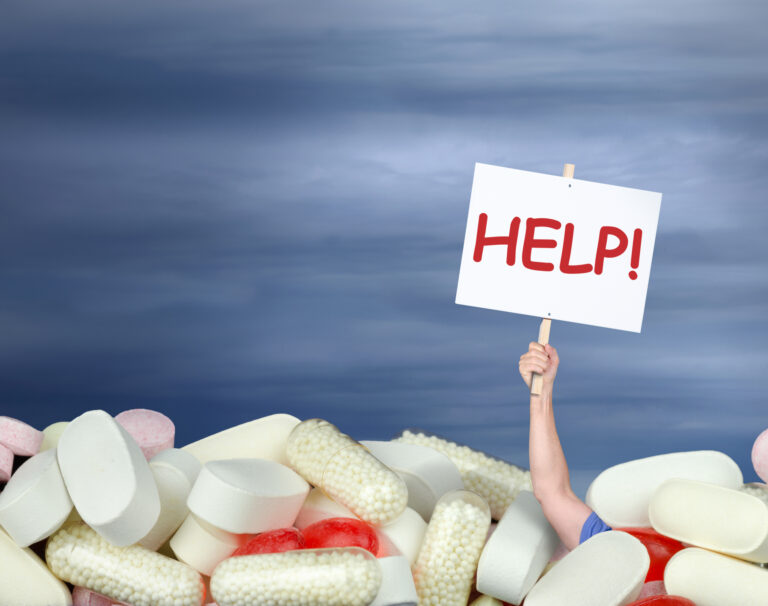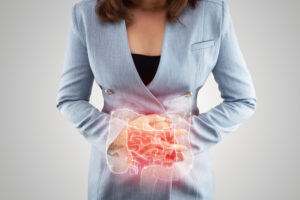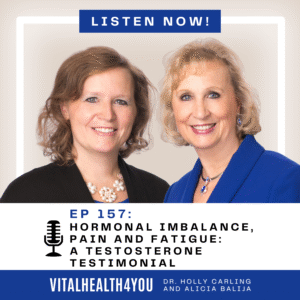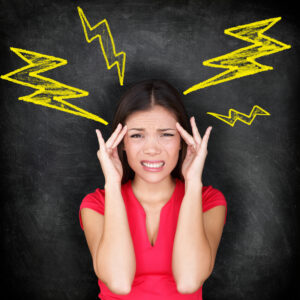As an adjunct therapy for fighting addiction, acupuncture can be very successful in helping to curb the chemical addiction and behavioral compulsions that feed a person’s addiction to harmful substances or habits. Whether the nature of the addiction is chemical in nature, such as in the cases of substance abuse, alcohol dependency, food addiction and smoking, or behavioral like gambling, compulsive lying, or sex addiction, acupuncture can help to address the root problems and systemic imbalances in the body and provide a useful tool in cessation of the addiction.
There are several components of acupuncture that aid in the quieting of compulsive behaviors. Acupuncture can help to detoxify the body of the chemicals that are causing the addictive component to be triggered in the patient, help to curb cravings, and can calm thoughtless actions, like reaching for a cigarette or a drink without thinking about it. Furthermore, acupuncture treatments release endorphins into the nervous system. Considered by many to be the natural “feel good” chemical of the human body, endorphins promote feelings of health, positive thought processes, upbeat attitudes, and promote the sense of general well being. Many acupuncture patients report experiencing a feeling of calmness or even a faintly “buzzed” feeling after acupuncture. More than one patient has used the phrase “acupuncture glow” to describe the sensation they experience after their treatments, which can mirror the feeling many addicts experience when engaging in the behavior of their addiction, but without the compelling nature or harmful consequences of the addiction. Furthermore, endorphins are natural painkillers.
It is impossible to say just what the treatment will entail, or exactly how many acupuncture needles will be used and where they will be placed during an acupuncture treatment for addiction. The acupuncturist will take a comprehensive history of the patient’s pattern of addiction, of their medical history and condition, and will perform an examination of the patient. He or she will then determine a treatment that will address the particular needs of the individual patient. Many of the detoxification acupuncture points are in the ear, however, so it is likely that at least some, if not all, of the treatment designed to help combat substance, nicotine, and alcohol addictions will be in the method of “auricular acupuncture” or ear acupuncture.
What is acupuncture?
Acupuncture is a form of Traditional Chinese Medicine (TCM) that was developed in China at least 3,000 years ago, and may date back as many as 5,000 years. A word made up of the roots “acus” meaning needle, and “puncture” meaning the piercing of the skin, acupuncture literally translates to “puncture with needles.” By placing hair-fine needles into the skin at strategic points in the body known as “acupuncture points,” acupuncture can help to promote healing, alleviate pain, calm spasms and ticking, bolster the immune system, and generally encourage good health in myriad ways.
The focus of acupuncture treatment is the “qi” (pronounced “chee”) or the life energy of the body. It is the belief of practitioners of Traditional Chinese Medicine that the qi is flowing through every living thing and that it is what allows life to occur. Qi flows through the body through channels known as meridians. There are twelve major meridians of the body (and several minor meridians), which are associated with twelve major organ systems of the body. These are the lung, the large intestine, the stomach, the spleen, the heart, the small intestine, the bladder, the kidney, the pericardium, the san jiao (recognized as an organ only in TCM, and is considered to be a heat source of the body), the gall bladder, and the liver meridians. It is through these meridians that the qi flows, promoting life and well being, and affecting the quality of the physical, mental, spiritual, and emotional health.
It is believed that when the qi is out of balance, blocked, or stagnated, illness and pain result. Pain and illness can also cause the imbalance of the qi, as the chicken and the egg are interconnected, and one will always come first. The process of acupuncture, of the placing of needles into the acupuncture points (which fall along the meridians) corresponding with the location of the disharmony of the qi will restore the qi to balance and allow it to flow freely again, thereby alleviating the symptomatic problems.
Aside from the needling of acupuncture, there are other devices the acupuncturist may use to help restore the quality of the qi and return the body’s systems to order. The application of specific herbs, which are heated and smolder above the appropriate acupuncture points, known as moxibusion, sends warmth down into the points. Cupping is the placement of small glass cups on the skin of the back. The air inside the cups is either filled with hot smoke, which causes the skin under the cups to be drawn up into the body of the cup as the air inside cools, or a suction gun is attached to the outside of the cup which suctions the air out. This suctioning of the skin can draw toxins from the body and promote healing and balance. Similarly the application of a small amount of electrical current to the end of the acupuncture needle, at high or low frequency, sends an the current down into the point, providing the point with added stimulus.
What does a patient experience during an acupuncture session?
The acupuncturist will examine the patient first and take a comprehensive medical history. Some of the examination is unique to acupuncture and may seem odd to the patient. For instance, the acupuncturist will take the patient’s pulse, but in doing so, he or she will generally take it three times, and will alternate which fingers he or she is using to read the pulse. The patient’s tongue will also be examined, as deficiencies of the vital organs and depletions of qi are evident in the shape, texture, and color of the tongue.
After the examination, the patient will lie down on a massage table, either prone or supine, and the acupuncturist will place some needles in the body. The number and location of the needle sites will vary patient-to-patient, and often visit-to-visit, depending on the needs of the patient at that point. Needles may be placed in the part of the body that is causing the patient trouble, or they may be inserted into locations nowhere near the source of the pain or problem.
For most, acupuncture treatments are completely painless. The needles are very fine (the average diameter of an acupuncture needle is 0.015”), and they are solid. What many patients don’t realize is that most of the pain that they have experienced due to needle insertion in the medical setting is caused by the hole in the center of the blood draw or injection needle, which allows fluid to be either drawn or injected through the shaft of the needle. This hole causes there to be some resistance as the needle is inserted, which pulls on the skin and causes most of the sting that the patient feels. Due to the solid and tiny nature of the needles, acupuncture needles can be inserted into the outer layers of the skin with no or very little discomfort.
Occasionally, if there is a high concentration of qi blocked around a particular point, the patient may experience a small twinge of pain, similar in feeling to a bug bite, and this feeling will typically subside as the treatment continues and the blockage begins to resolve.
Once the needles are in place, the patient will lie quietly in a dim room, generally with soft, non-lyrical, music playing, for anywhere from ten to thirty minutes, depending on the current need of the patient.
Is acupuncture safe?
There are few negative side effects to the use of acupuncture. The most common adverse affects include bruising or slight swelling around the needle site, or soreness. Occasionally, due the relaxing nature of the procedure and the calming affect of acupuncture on the energy of the body, patients may report a slightly sedated feeling, and in rare occasions, experience a vasovagal (wooziness, fainting) episode. These responses are generally mild and resolve quickly. There have been very few cases of serious injury due to acupuncture treatment, however, as with all medical therapies; patients should discuss possible side effects of acupuncture before beginning treatment.
Because acupuncture employs the use if needles, it is also important to ensure that the practitioner is maintaining appropriate safety precautions regarding the sterilization of the needles. Most acupuncturists today use disposable needles that are discarded immediately after use in one patient. If the acupuncturist is not using disposable needles, it is appropriate to inquire about their sterilization procedures.
How can acupuncture help with addiction and addictive behaviors?
Acupuncture can help a patient in the struggle to cease addictions and addictive behaviors in several ways. The simple act of helping to detoxify the body of the addictive substance is a start, but there is more benefit to be gained from the treatments. By helping to curb cravings, acupuncture provides the patient with an enhanced ability to abstain from reaching for the source of their addiction. Acupuncture can also bolster the level of energy in the body, making it easier for the patient to stay active during the day. Most importantly, the endorphins released during acupuncture treatments leave patients feeling relaxed, energized, and positive in frame of mind. This optimistic attitude and sense of overall well-being assist the patient throughout the day to make health conscious choices and maintain a positive lifestyle.
Will acupuncture work for you? Unfortunately, as with Western medical treatments, no one therapy works for all people for the treatment of addiction. To date, no one really understands how the mechanism of acupuncture works, nor do they know why it is more successful for some than for others. Many people argue that the success of acupuncture is due to a placebo effect; however, there have been many clinical studies conducted which support its efficacy in myriad ailments and conditions. Acupuncture has also been successfully utilized in small children and animals.
In addiction cessation, there is no magic bullet. The addict will need a lot of help and support to beat his or her addiction, and acupuncture can be a part of that help, but should not be considered a blanket cure. Regardless of the assistance provided, there is going to be some hard work required on the part of the patient to achieve his or her goal. What acupuncture can provide is another weapon in their arsenal as he or she fights to stay healthy.
©2005 Holly A. Carling, O.M.D., L.Ac., Ph.D.







